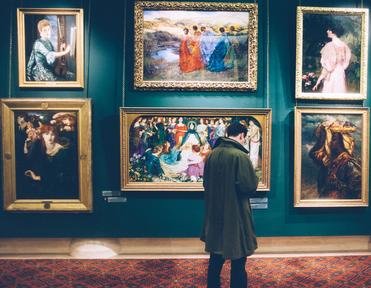Quiz Answer Key and Fun Facts
1. The opulent interior has an unmistakable imperial feel to it. The domed hall, the colorful marble, the granite, the gold leaf decorations, the grand staircase, the statues - all are stunning. Which sovereign inaugurated the museum and in what year?
2. In Room VII, there are two enchanting landscapes by Bellotto: a view of Vienna from the Belvedere Palace and a view of the Schönbrunn Palace. By what other name is Bellotto sometimes known - a name he shares with another better-known artist, who was his uncle?
3. In Room X one can see 'The Fight between Carnival and Lent' by Pieter Bruegel the Elder, an artist who always makes visitors stop to marvel, then think deeply. The painting is dated 1559. Do you know which Habsburg ruler was the first owner of this work?
4. Still in Room X, there is another fascinating work by Pieter Bruegel the Elder, 'The Tower of Babel'. It is perhaps one of his most popular paintings. According to the biblical Book of Genesis, why did God confuse the languages of the people who were building the tower and scattered them?
5. In Room XIII, you will see Rubens' 'Helena Fourment'. Like other works in which half-naked women act coy about their nudity, Helena covers her private parts with a rich fur. For the viewer, the painting gives us an opportunity to study some of the anatomy of the ladies of that century and discover Rubens' unbelievable talent in forcefully rendering color, movement and sensuality. Look carefully and you will understand why he is considered the number one master of the Flemish baroque painting. But who was this Helena Fourment?
6. In Room XIX, you will see the stunning 'Saliera' (salt shaker) of Benvenuto Cellini, his only surviving goldsmith's work. The beauty, precision and harmony of the composition are overwhelming. Cellini was one of the most colorful artists of the Renaissance. Where was he from?
7. In Cabinet 10 you will see the famous 'Infanta Margarita Teresa in blue dress' by Velázquez, who created it in 1659, one year before he died. Margarita was born in 1651 in Spain. Many visitors who stand in front of the painting feel the urge to touch the dress, which has shining spots all over like a proto-impressionistic work. The painter here reached the peak of his style. Emperor Leopold I Habsburg received the painting the same year it was created. He married the Infanta in 1666 in Vienna. She was a Habsburg, too. Do you know what happened to her after she got married to Leopold I?
8. In Cabinet 19, you will see Vermeer van Delft's 'The Art of Painting'. An amazing piece of work in which allegory coexists with illusions of space. Rich in color, detail and brilliant in composition, it explains the stellar reputation of this painter of the Dutch Golden Age. Over the years, many have purchased this masterpiece. Which of those listed below actually acquired this famous work?
9. In Room IX, you will see an absolutely charming portrait of a young woman with long curls covering her temples. Albrecht Dürer painted her in 1505 during his stay in Venice. Do you know her name?
10. In Cabinet 3, you will find the impressive 'Portrait of a young man in front of a white curtain' by the Venetian Lorenzo Lotto, dated 1508. The uneven parts of the face such as the long nose and the wart on the forehead contrast with the curtain falling behind the young man. A marvelous composition of the High Renaissance. On what material was the portrait painted on?
Source: Author
drx3dan
This quiz was reviewed by FunTrivia editor
stedman before going online.
Any errors found in FunTrivia content are routinely corrected through our feedback system.
